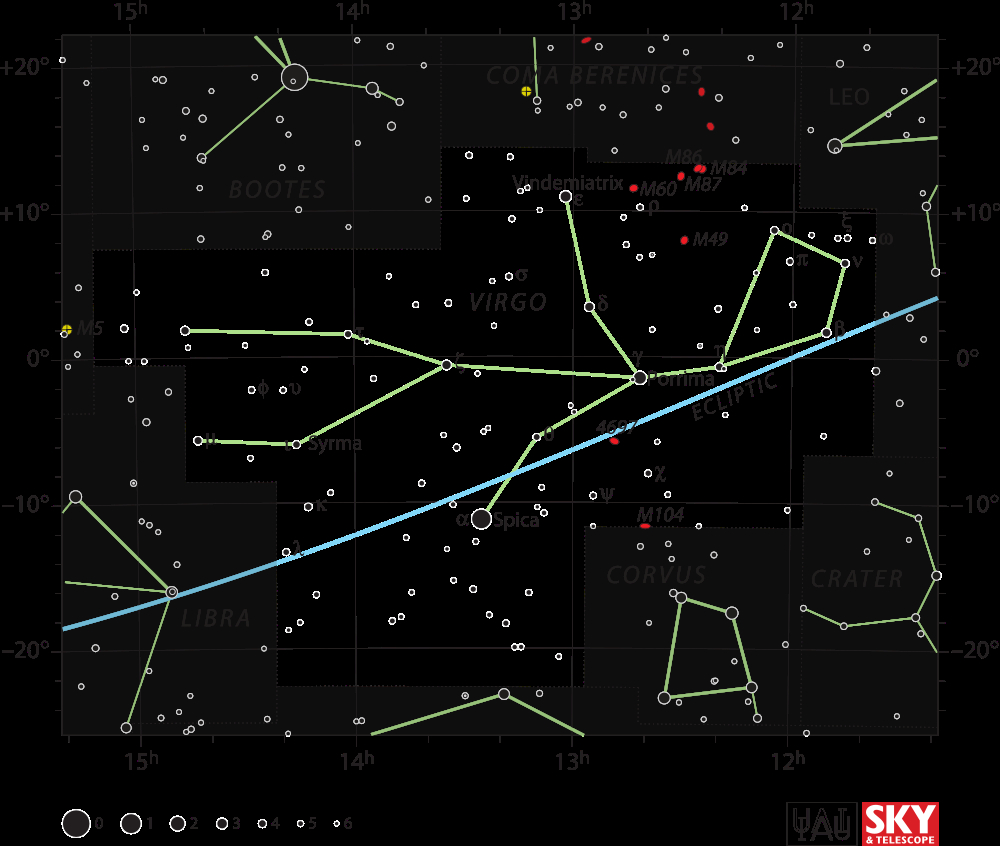
By IAU and Sky & Telescope magazine (Roger Sinnott & Rick Fienberg) [CC-BY-3.0], via Wikimedia Commons
"The Maiden"

By IAU and Sky & Telescope magazine (Roger Sinnott & Rick Fienberg) [CC-BY-3.0], via Wikimedia Commons
Abbreviation: Vir
Genitive: Virginis
Constellation family: Zodiac
Nearest constellations: Boötes, Coma Berenices, Corvus,
Crater, Hydra, Leo, Libra, and Serpens
Right ascension: 13.21h
Declination: -3.73°
Visible between latitudes: +80° and -80°
Square degrees: 1294
Luminary: Spica (Alpha Virginis)
Named stars: Spica, Zavijava, Porrima, Auva, Vindemiatrix, Heze, Zaniah, Syrma, Rijl al Awwa
Notable deep sky objects: M49, M58, M59, M60, M61, M84, M86, M87, M90, M104
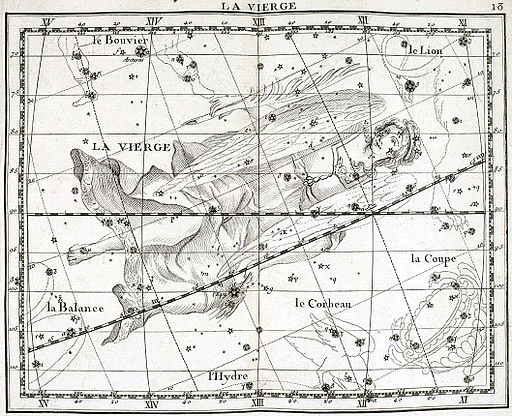
By John Flamsteed [Public domain], via Wikimedia Commons
Virgo is the second-largest constellation, barely surpassed by the even-larger Hydra. Virgo is one of the twelve constellations of the zodiac and is visible throughout both hemispheres during May.
Spica—or Alpha Virginis—is the constellation's luminary and the fifteenth-brightest star in the night sky.
Virgo contains the Virgo Cluster, which is a cluster of over 2000 galaxies.
Virgo has been associated with a range of mythological female figures. Those figures include Astraea, a woman who symbolized justice to the Greeks, and Ceres, the Roman goddess of agriculture.
NGC 5331 (interacting galaxies):
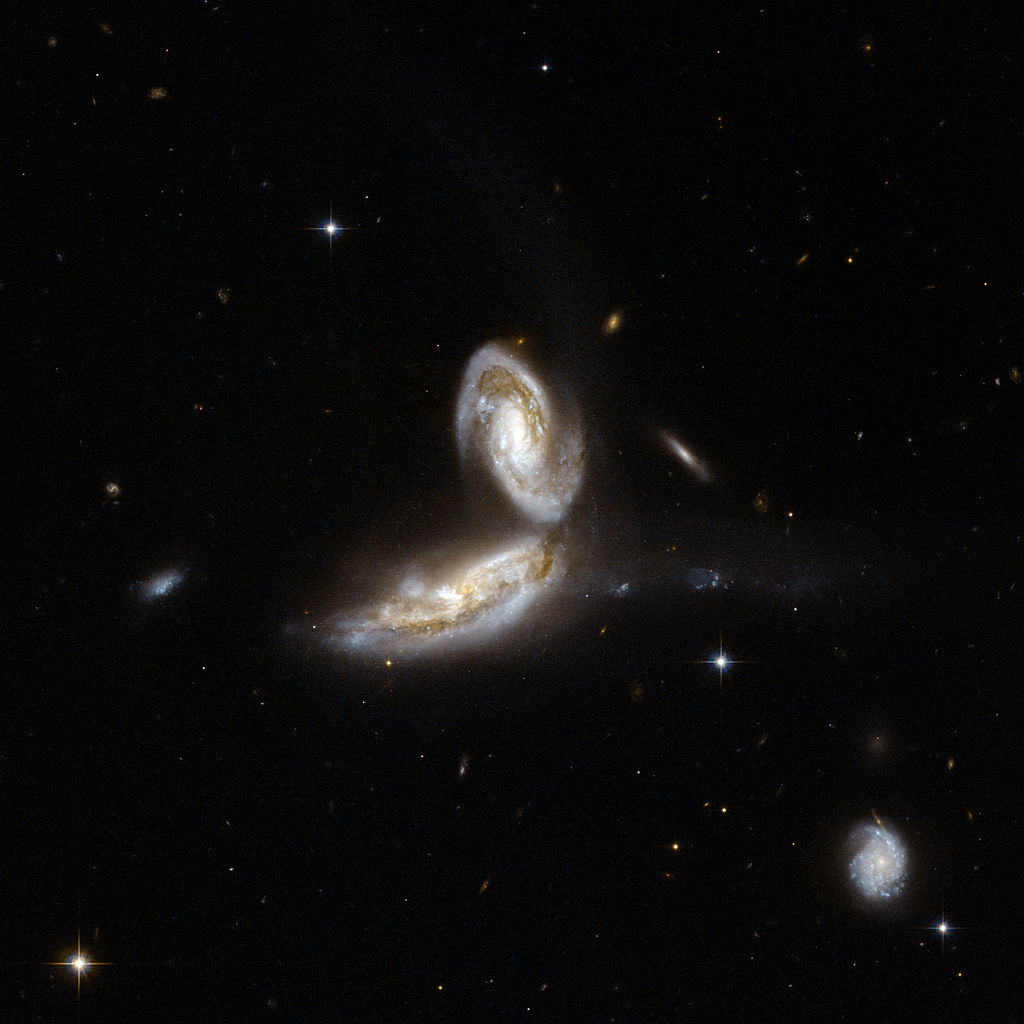
By NASA, ESA, the Hubble Heritage (STScI/AURA)-ESA/Hubble Collaboration, and A. Evans (University of Virginia, Charlottesville/NRAO/Stony Brook University) [Public domain], via Wikimedia Commons
NGC 5584 (spiral galaxy):
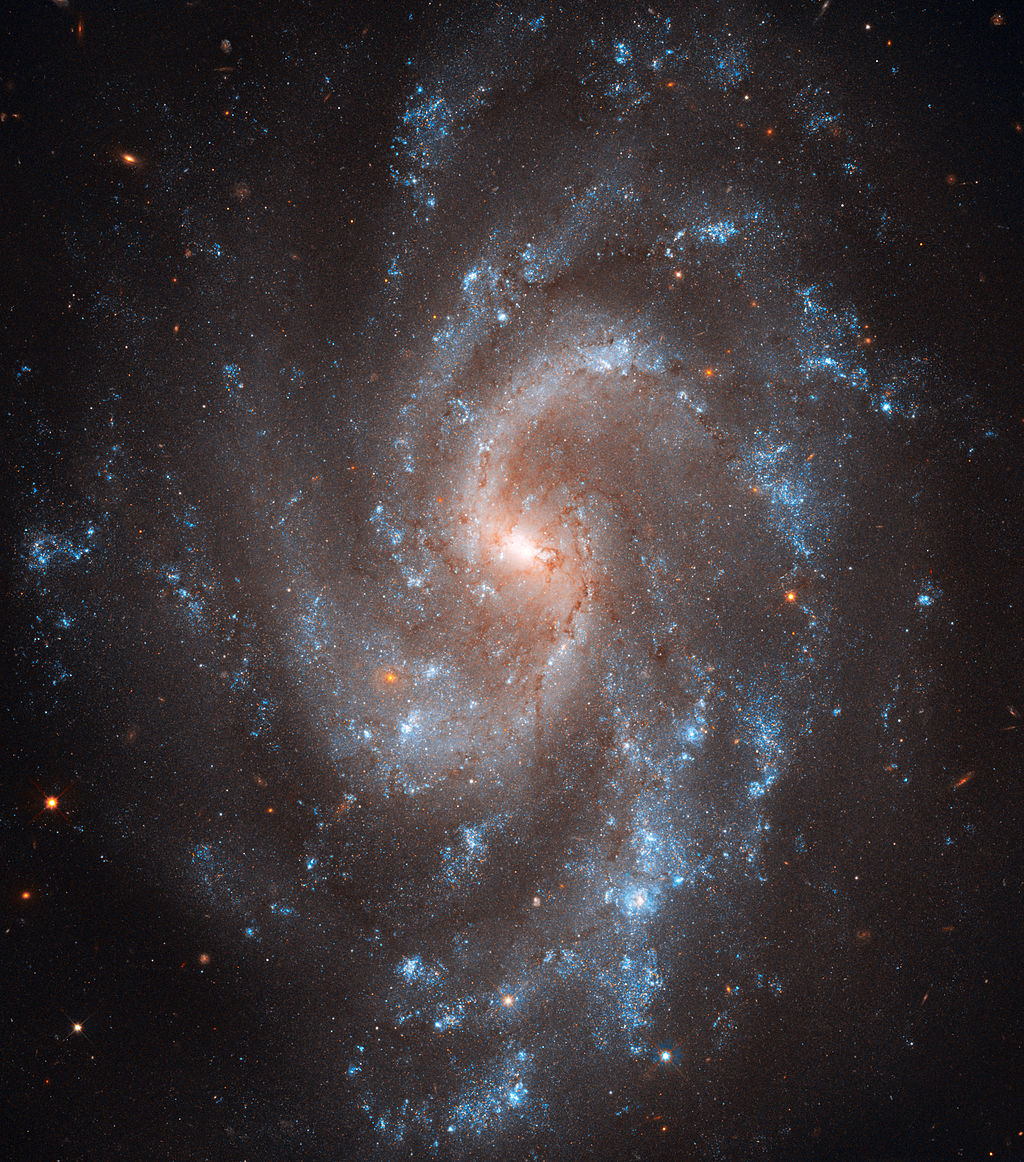
By NASA, ESA, A. Riess (STScI/JHU), L. Macri (Texas A&M University), and Hubble Heritage Team (STScI/AURA) [Public domain], via Wikimedia Commons
Abell 1689 (galaxy cluster):
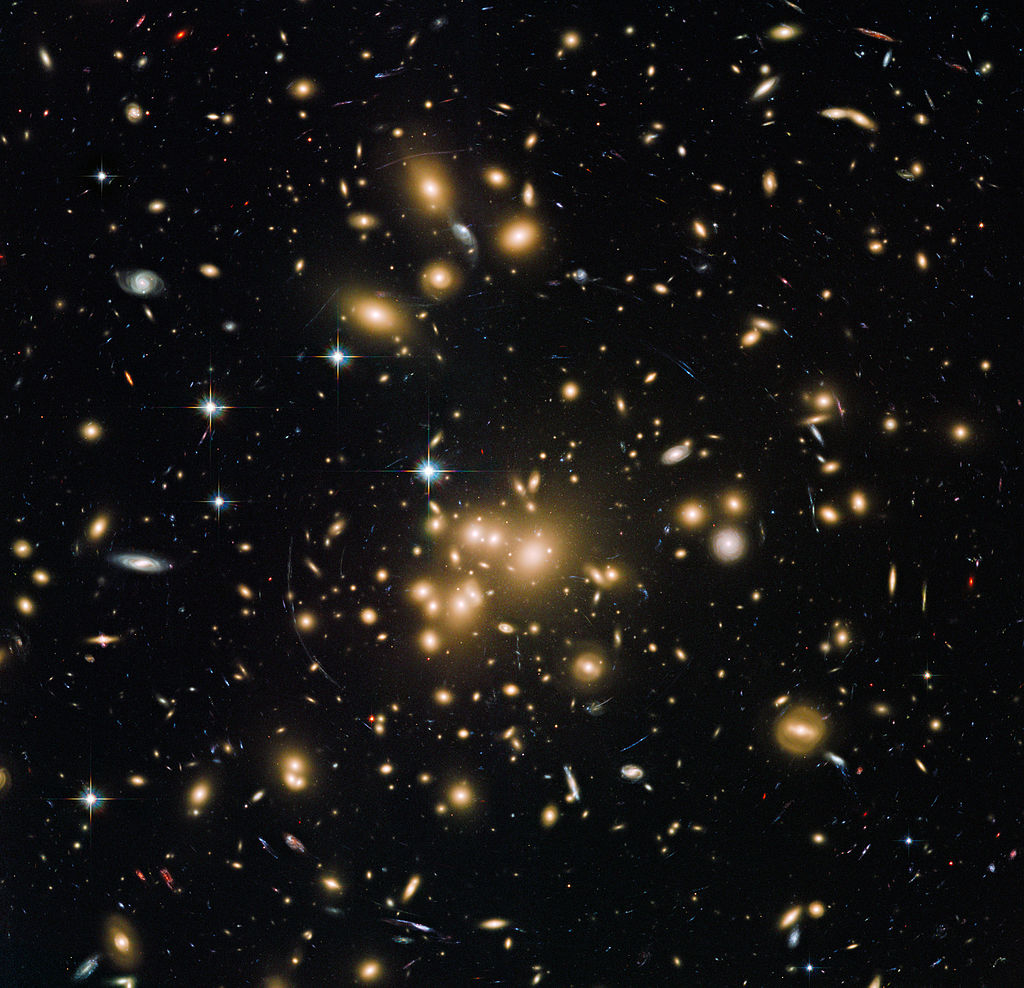
By ESA/Hubble [CC-BY-3.0], via Wikimedia Commons
M104 (the Sombrero Galaxy):
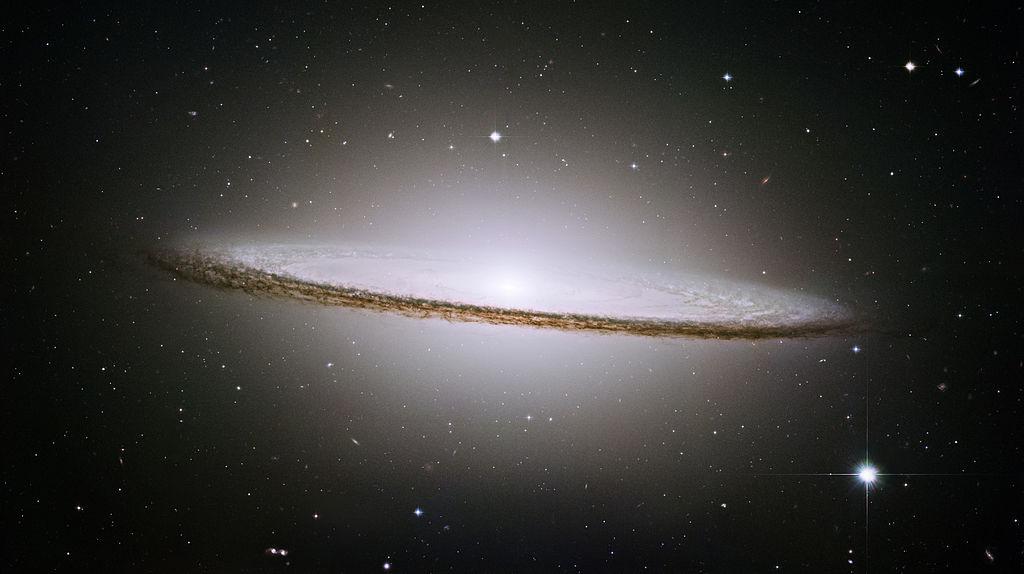
By NASA/ESA and The Hubble Heritage Team (STScI/AURA) [Public domain], via Wikimedia Commons
NGC 5775 (spiral galaxy):
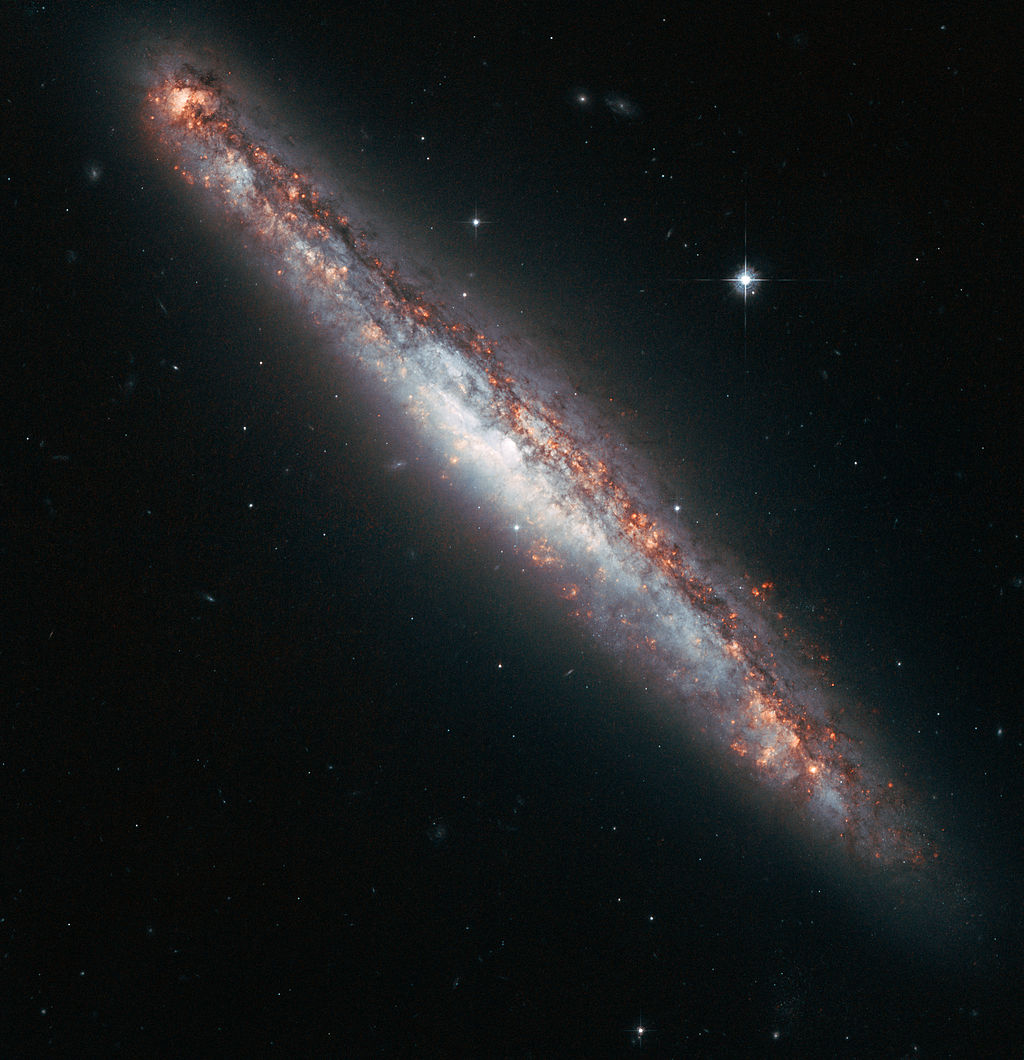
By ESA/Hubble & NASA [CC-BY-3.0], via ESA/Hubble